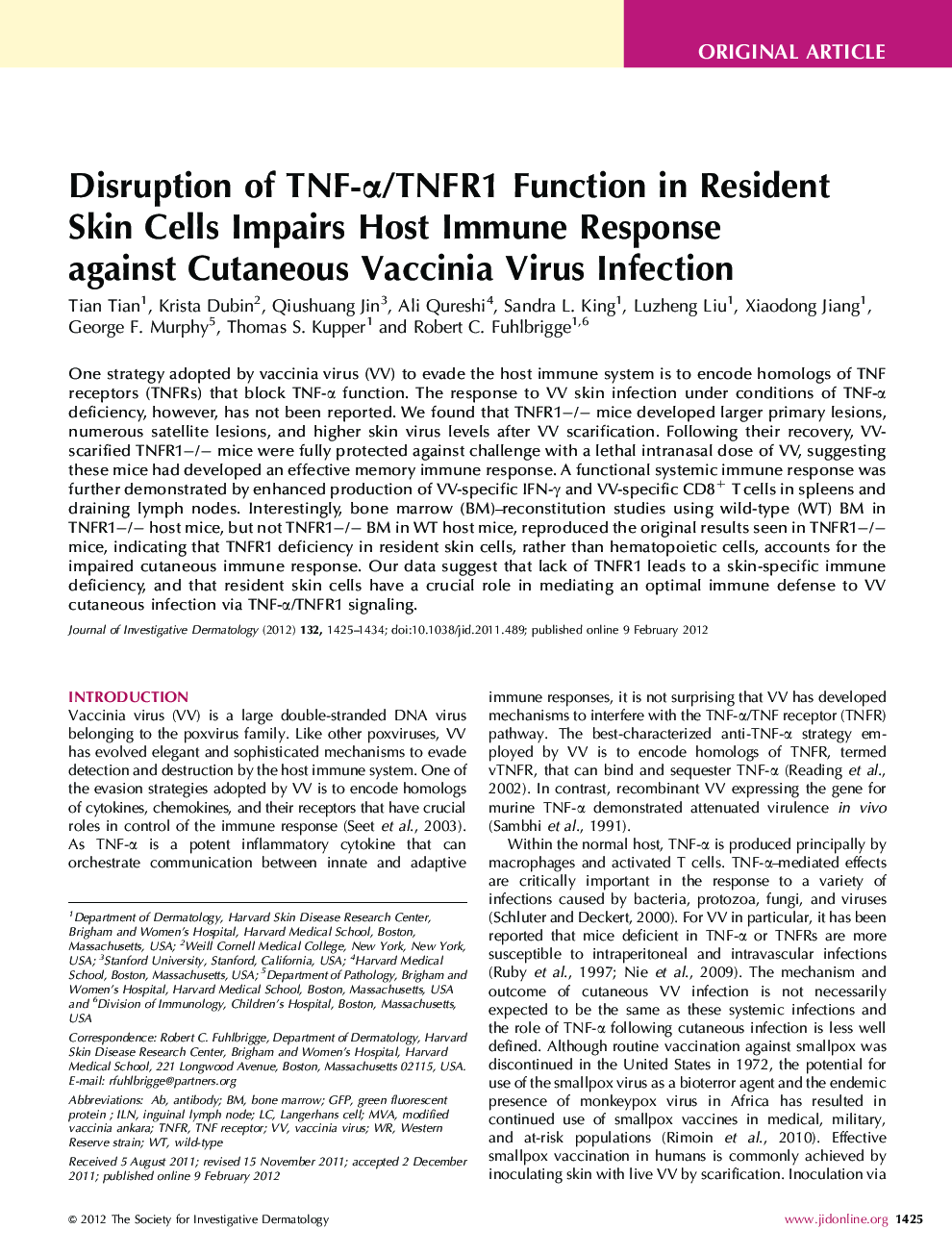| Article ID | Journal | Published Year | Pages | File Type |
|---|---|---|---|---|
| 3215639 | Journal of Investigative Dermatology | 2012 | 10 Pages |
One strategy adopted by vaccinia virus (VV) to evade the host immune system is to encode homologs of TNF receptors (TNFRs) that block TNF-α function. The response to VV skin infection under conditions of TNF-α deficiency, however, has not been reported. We found that TNFR1-/- mice developed larger primary lesions, numerous satellite lesions, and higher skin virus levels after VV scarification. Following their recovery, VV-scarified TNFR1-/- mice were fully protected against challenge with a lethal intranasal dose of VV, suggesting these mice had developed an effective memory immune response. A functional systemic immune response was further demonstrated by enhanced production of VV-specific IFN-γ and VV-specific CD8+ T cells in spleens and draining lymph nodes. Interestingly, bone marrow (BM)–reconstitution studies using wild-type (WT) BM in TNFR1-/- host mice, but not TNFR1-/- BM in WT host mice, reproduced the original results seen in TNFR1-/- mice, indicating that TNFR1 deficiency in resident skin cells, rather than hematopoietic cells, accounts for the impaired cutaneous immune response. Our data suggest that lack of TNFR1 leads to a skin-specific immune deficiency, and that resident skin cells have a crucial role in mediating an optimal immune defense to VV cutaneous infection via TNF-α/TNFR1 signaling.
